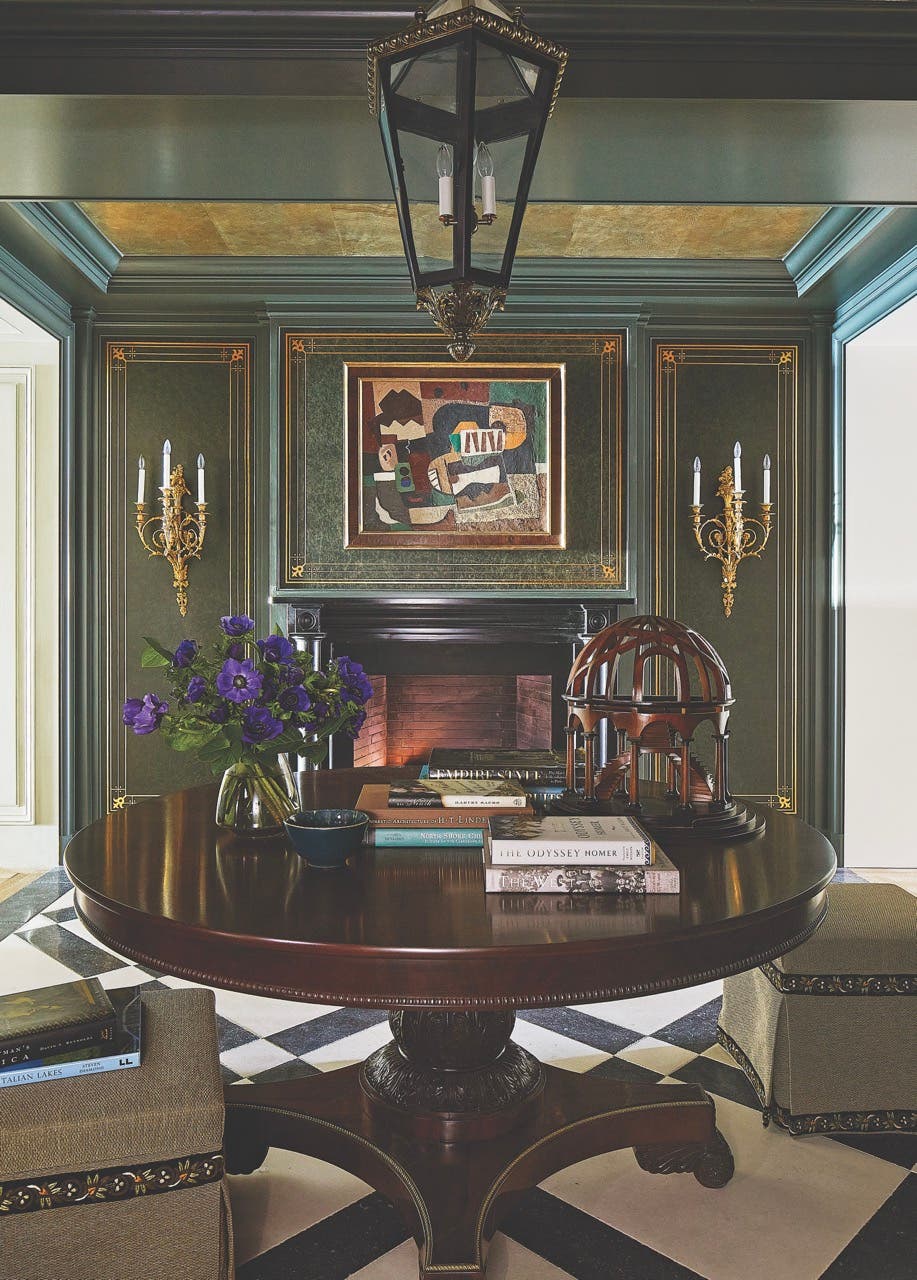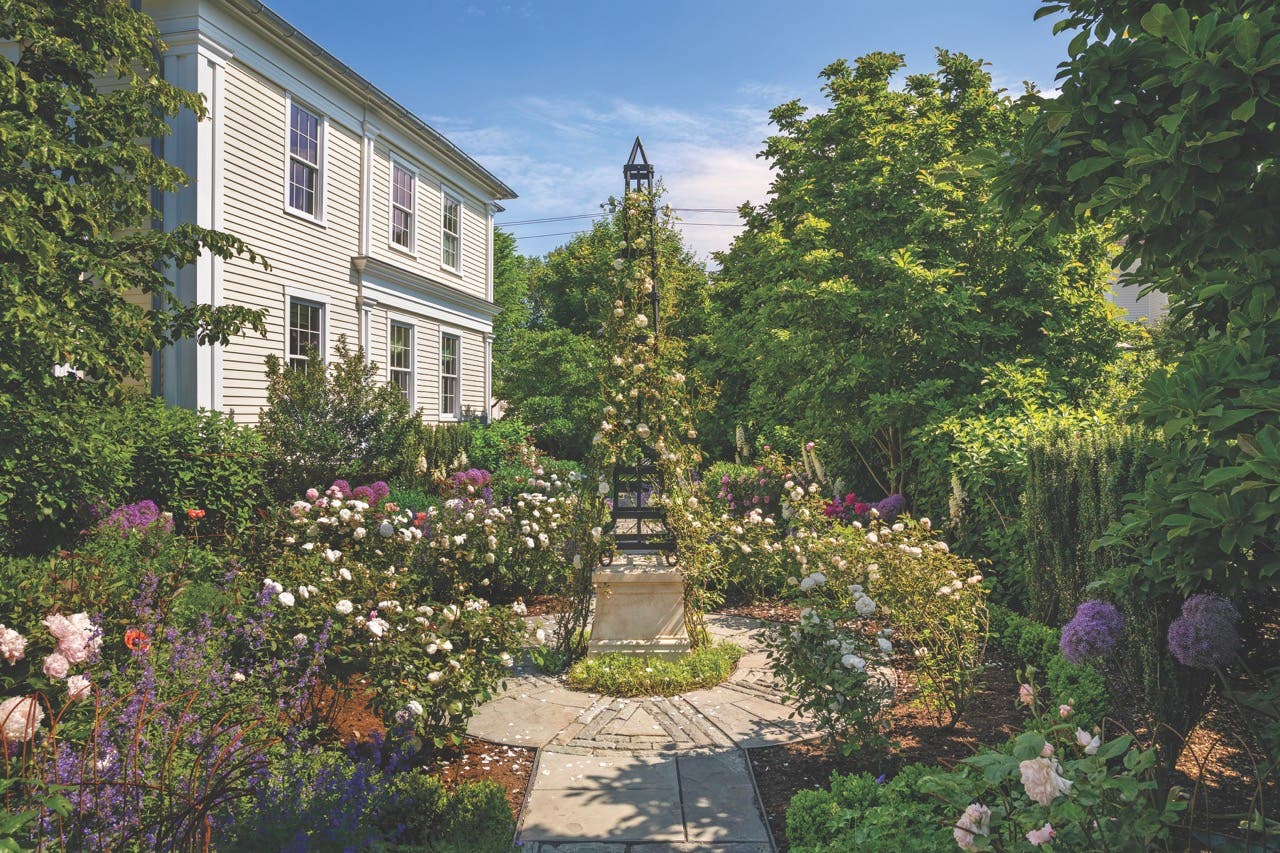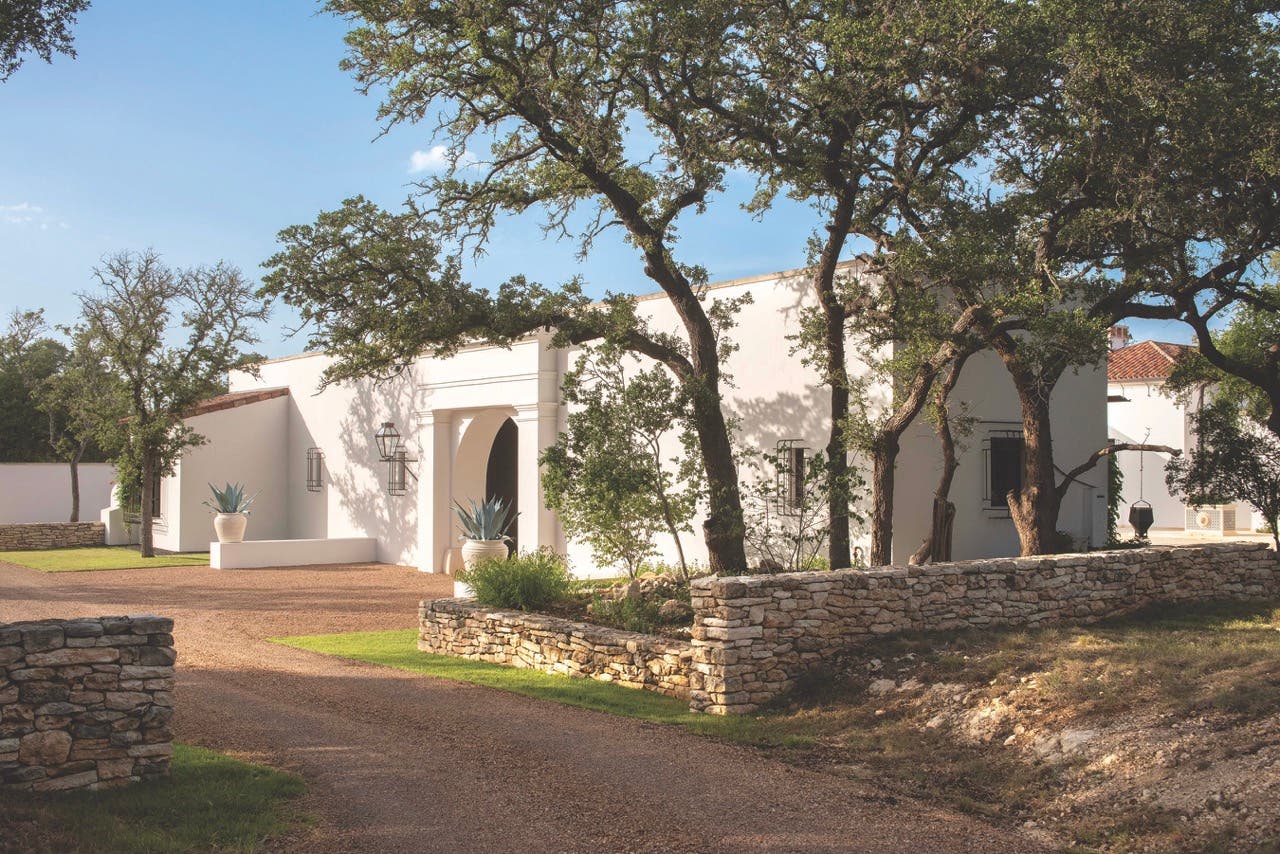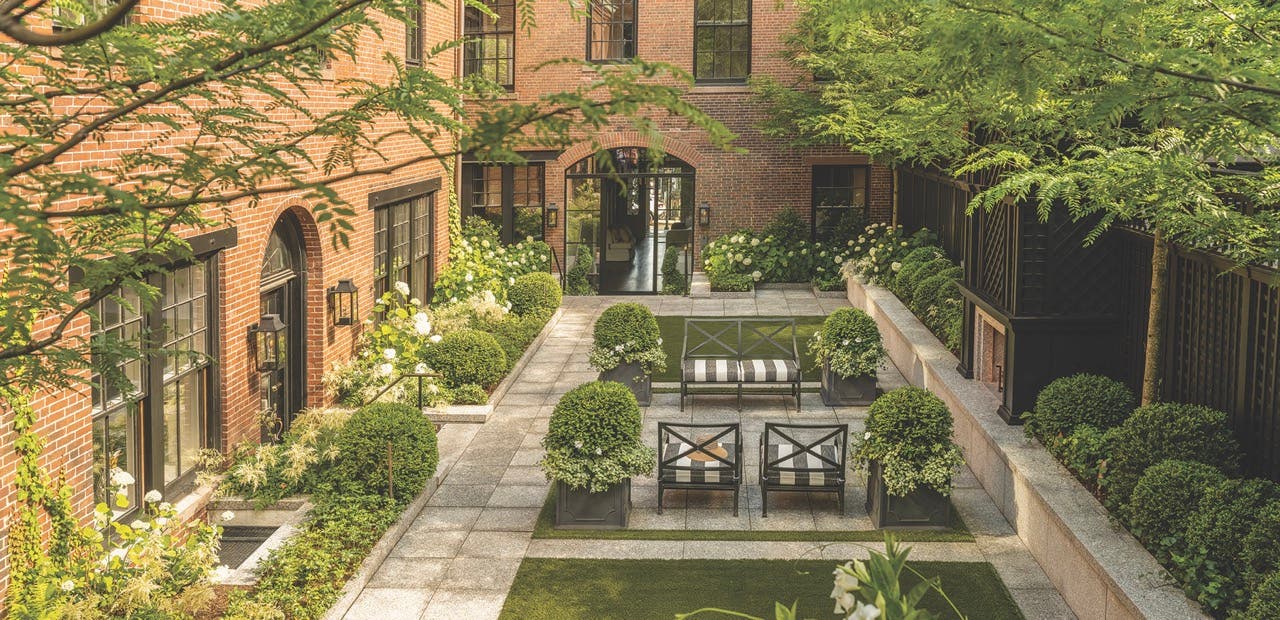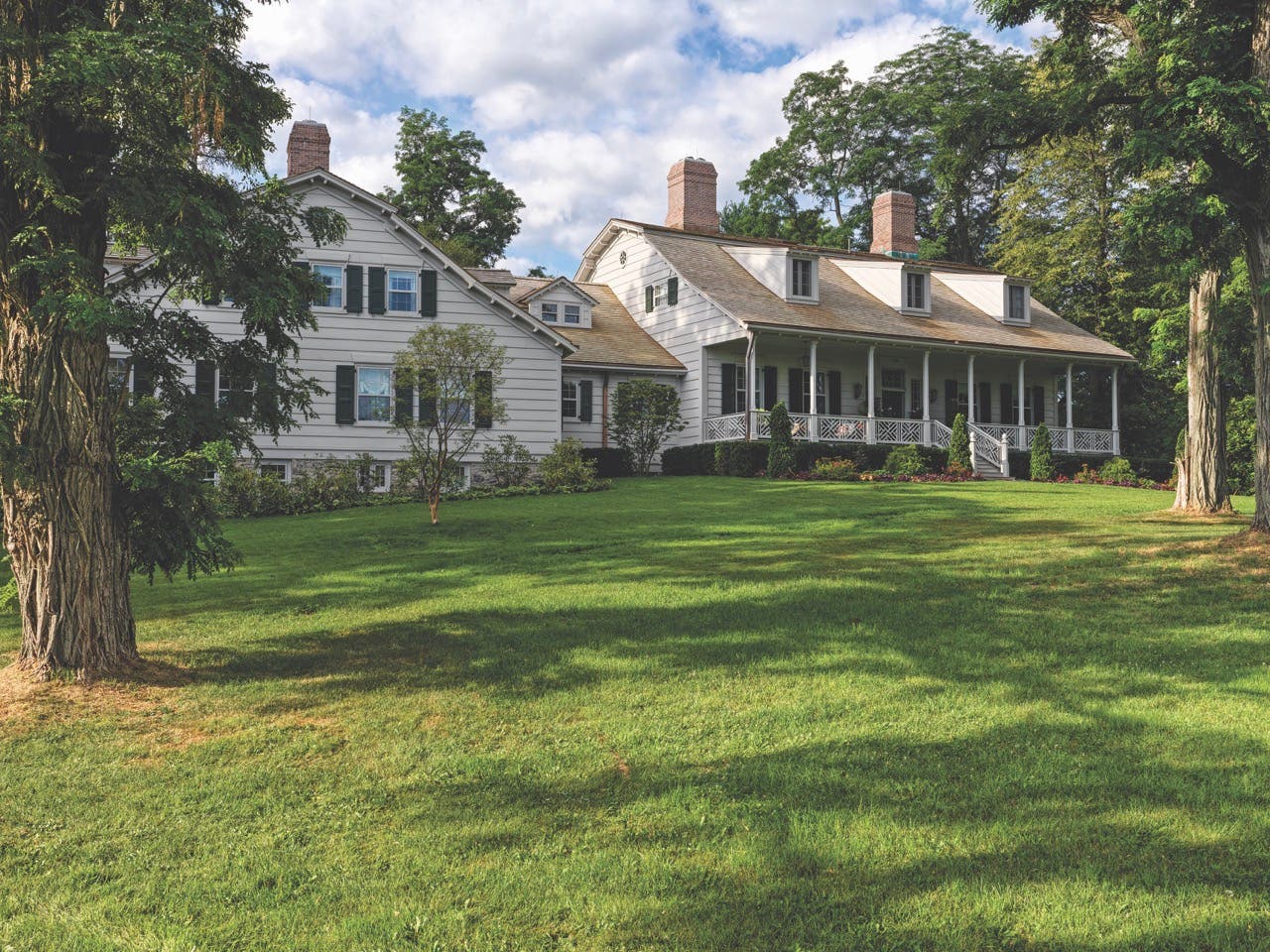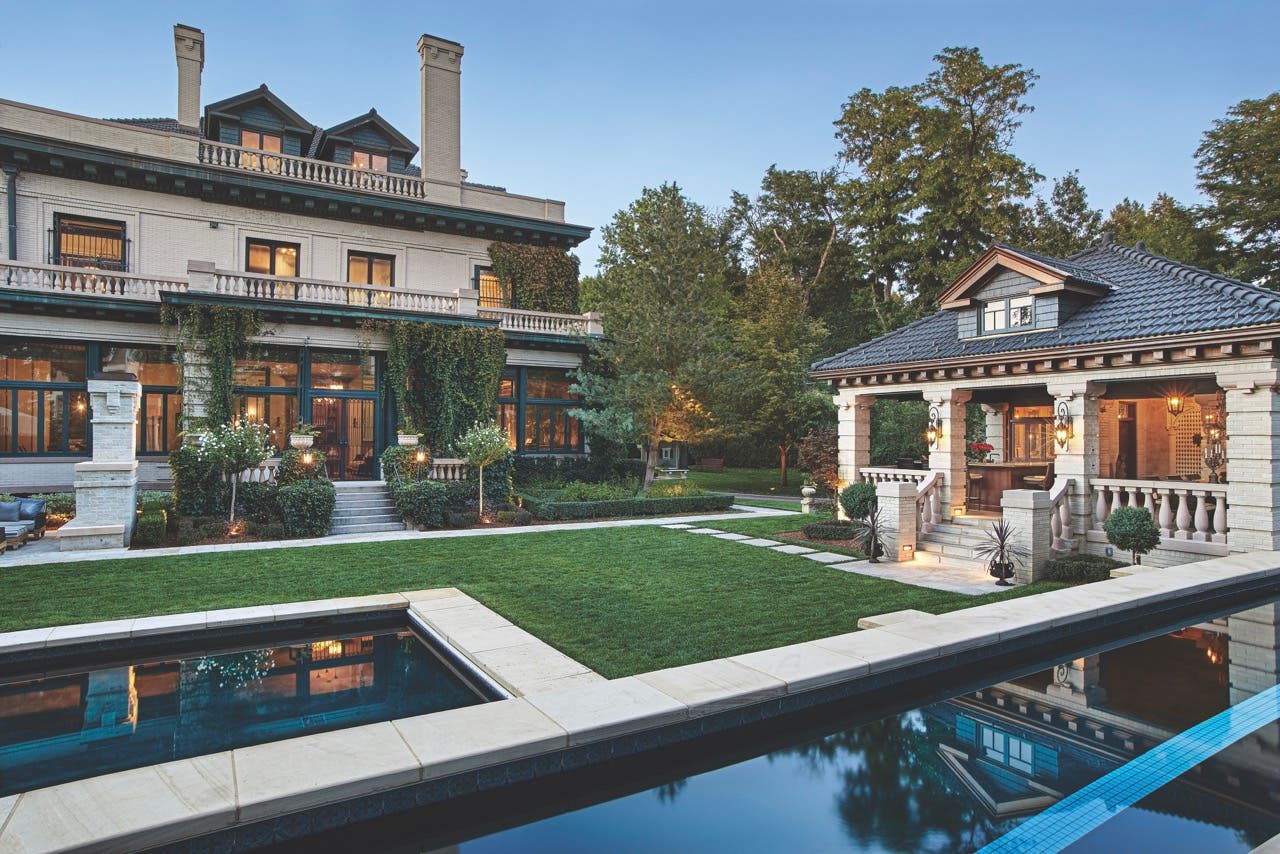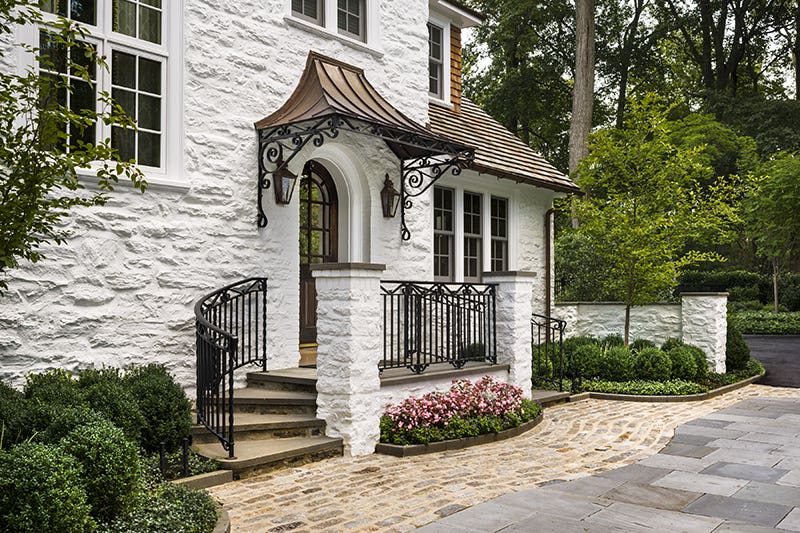
Palladio Awards
Adding On to an English Arts and Crafts House
2013 PALLADIO AWARDS
Sympathetic Addition
Winner: Peter Zimmerman Architects
The stately English Arts and Crafts house, set on Philadelphia’s exclusive Main Line, is a real memory keeper. Built in the early 1900s, it was a testament to taste and time: It had been virtually untouched since its last stone was set in place. The current owners – a couple who are parents to a pair – and the three-story house share a long history: After watching their children mark their milestones in the Haverford, PA, home, and grow old enough to leave, they decided that it was time to create new memories in this, their primary residence. To do so, they commissioned Peter Zimmerman Architects of Berwyn, PA, to carry out a renovation and design an addition that would reference the past while staying in touch with the present mores of the suburban neighborhood. “The systems in the house were at the end of their useful life,” says architect Peter H. Zimmerman, AIA, president of the firm that bears his name. “So it was time to make it more livable by making it fit their lifestyle.”
Project: Residence, Haverford, PA
Architect: Peter Zimmerman Architects, Berwyn, PA: Peter H. Zimmerman, president; William Johnson, project architect; Tim Lucci, architect in charge of construction
Contractor: Corso Brothers Construction Corp; Cherry Hill, NJ
The clients, who also own a Shingle-style summer home on Cape Cod, envisioned an expanded space that created a natural flow between indoor and outdoor spaces so there would be more natural light and better views of the gardens, which had matured through their decades of stewardship. They also wanted more family living space inside, including a new kitchen with 21st-century functionality and style, an additional bathroom on the second floor where the family bedrooms are and a more decided formal entrance and dedicated family entry. “Although it’s not a historic structure and there are no strictures that govern exterior changes,” says Zimmerman, “the clients loved the feeling of the old house and didn’t want to lose it. Our firm has a tradition of making seamless additions, and we focus on the house as a whole, including the site and the landscaping in our plans.”
Zimmerman, working with project architect, Bill Johnson, and architect in charge of construction, Tim Lucci, came up with a plan that not only preserved the original character of the 5,000-sq.ft. house but also expanded its footprint by 1,500 sq.ft. that looked as though they had always been there. The two-year project was overseen by Corso Brothers Construction Corp. of Cherry Hill, NJ, and Mary Hastings Interiors of Berwyn, PA, was in charge of the interior decoration.
The firm has a 30-year history in traditional residential projects mostly in the Philadelphia region, yet Zimmerman says the addition was a challenge because the house, which is perpendicular to the street, is on a very deep and narrow two-acre site. “You see the whole side of the house from the street,” he says. “And the drive goes in a straight line along the house to the garage, which also was visible. There was no sense of arrival.”
To clear the front façade for the renovation, the kitchen, family entrance and garage were torn down and placed in a new, old-style addition on the end of the house. The driveway was extended to the back and the service area, which includes the two-car garage, was placed around the corner, where it is out of view. “It was a tight site to accommodate all of these elements,” Zimmerman says.
The most notable feature Zimmerman added to the façade is the new front entrance and formal English Country-style courtyard. Although the entry space was not moved, stone walls with piers and two flanking stairs were added, giving the area an understated prominence. An elegantly swooping copper canopy that matches those of the back bay windows reminds all who enter that this is a house that cherishes each step in its history.
“We placed a fountain in the courtyard to provide sound,” Zimmerman says. “It is meant to be reminiscent of a horse trough to evoke the feeling of the turn of the century when horses and carriages would have been used at the house. It also serves to remove the space from the outside world.”
To the rear, it was the large swimming pool that presented the greatest challenge. “There wasn’t a design feature that unified the living area,” Zimmerman says. What existed was a “so-called” conservatory in the center of the façade that was little more than a screened-in porch. The owners liked the idea of having an indoor/outdoor space, so Zimmerman created a new greenhouse-style glassed-in garden room and sited it past the edge of the pool. “This allowed us to make an appropriate garden terrace space between the newly revealed French doors of the dining room and pool,” he says. A dramatic arched family entrance was added in the back.
“The largest gesture down to the smallest element in our designs becomes an expression of the balance and harmony between the compression and expansion of space, the interplay of light and shadow and the rules and scale of proportion.”
And in keeping with the tradition of whitewashing, which would have been popular at the time the house was built, the stone walls were painted white – as the owners had been doing for years.
Zimmerman says that the lush landscaping, which was designed by Charles Hess Landscape Architects of Landsale, PA, made the addition appear to transcend time. “There’s something wonderful about having stone walls covered by landscaping,” he says. “It adds to the age and authenticity and lends it a wonderful mystery.”
The redesign made the first-floor kitchen, the library/study and conservatory the heart of the house, which is what the clients longed for. “The owners entertain a lot,” Zimmerman says. “And this three-room space is perfect for parties – from the library/study, which is in the center, you step up to French pocket doors that lead to the conservatory. On the other side, an identical set of doors leads to the kitchen. Everything flows together. It is an elegant yet informal series of spaces to live in no matter the time of day or the time of year. They all work together. And the owners use the rooms all year round – they eat in the conservatory in the warm months and relax in the study in the winter.”
The lack of interior architectural elements provided the Zimmerman team with a blank slate “that allowed us to tie the entire house together from a formal point of view” by scaling up the architecture in the public rooms and scaling it down in the more informal spaces. Thus, the living room’s coffered ceiling, crown moldings and fireplace mantel set the stage for the library/study’s antique wormy chestnut paneling. “If we didn’t raise the architectural level in the living room,” Zimmerman says, “we couldn’t have used such a treatment in the study. It would have been too much.”
The work done on the Main Line house reflects the Zimmerman firm’s design philosophy, which is deeply rooted in the Classical tradition, regardless of architectural style. “Every project we do is in sync with the historic traditions of architecture: Classical proportion and scale, the balance of shadow and light and the importance of the sustainable relationship between the interior and exterior environments,” he says. “The largest gesture down to the smallest element in our designs becomes an expression of the balance and harmony between the compression and expansion of space, the interplay of light and shadow and the rules and scale of proportion.”
Suppliers for the project included Marvin Windows and Doors of Warroad, MN; Bevelo Gas & Electric Lights of New Orleans, LA; Ball & Ball Hardware of Exton, PA; and MarbleCrafters, Inc. of Marcus Hook, PA.
Great houses don’t forget their past, and Zimmerman hopes that when people see this one they remember what it was, and what it has become. “Houses are a living history,” he says. “They are not frozen in time. We’d like people who see it to say, ‘Look, they did some work, but it references memory.’”



